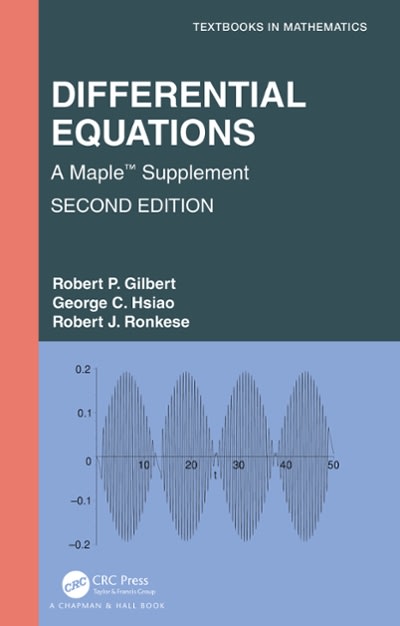Question
In 2007 a study was published investigating the effectiveness of various homework methods for students' learning outcomes, i.e. assisting students to learn the course material.
In 2007 a study was published investigating the effectiveness of various homework methods for students' learning outcomes, i.e. assisting students to learn the course material. Students took a pretest on a topic they had not seen before. Then they were randomly assigned to one of three homework assistance groups. After completing the homework they took another similar test on the same topic. The improvements in the grades, the difference between the post-test and the pre-test, were recorded for each student. The homework assistance methods were 1) check figures at various steps in the solution; 2) a full solution; and 3) no solution.
Is there evidence that some homework methods are more successful than others in assisting students to learn course material?
The next few questions are asking you to check the required assumptions and conditions. For the independence assumption, clearly explain in the context of the question whether or not the assumption is met. For the remaining assumptions, clearly refer to the appropriate plot(s) and how those plots show that the conditions are met (or not).
9.Independence Assumption: Use the randomization condition, in the context of the problem, to check if both independence within the aroups (are the individuals independent of one another) and among the groups (are the groups independent of one another).
10.Is the equal variance assumption met?
Does the plot thicken? condition: (met / not met) since the vs fit plot shows(difference in mean / equal mean / thickening / no thickening / random scatter)
Similar Variance condition?metot met?since the dotplot shows(difference in mean / equal mean / no thickening / similar ranges / different ranges)
11.Is the normal population assumption met? Check both the nearly normal condition and the outlier condition.
12.Identify the values of the test statistic and P-value
13.Assess the strength of the evidence.
Select one:
a. Very strong evidence for Ha
b. Strong evidence for Ha
c. Moderate evidence for Ha
d. Weak evidence for Ha
e. No evidence for Ha
14.State your conclusion in the context of the problem.
15.Would it be appropriate to run multiple comparison test (i.e. Tukey) to see which methods have an effect on test improvement scores?
(yes / no), since (we concluded Ho / the p-value is small / the p-value is large)


Step by Step Solution
There are 3 Steps involved in it
Step: 1

Get Instant Access to Expert-Tailored Solutions
See step-by-step solutions with expert insights and AI powered tools for academic success
Step: 2

Step: 3

Ace Your Homework with AI
Get the answers you need in no time with our AI-driven, step-by-step assistance
Get Started


